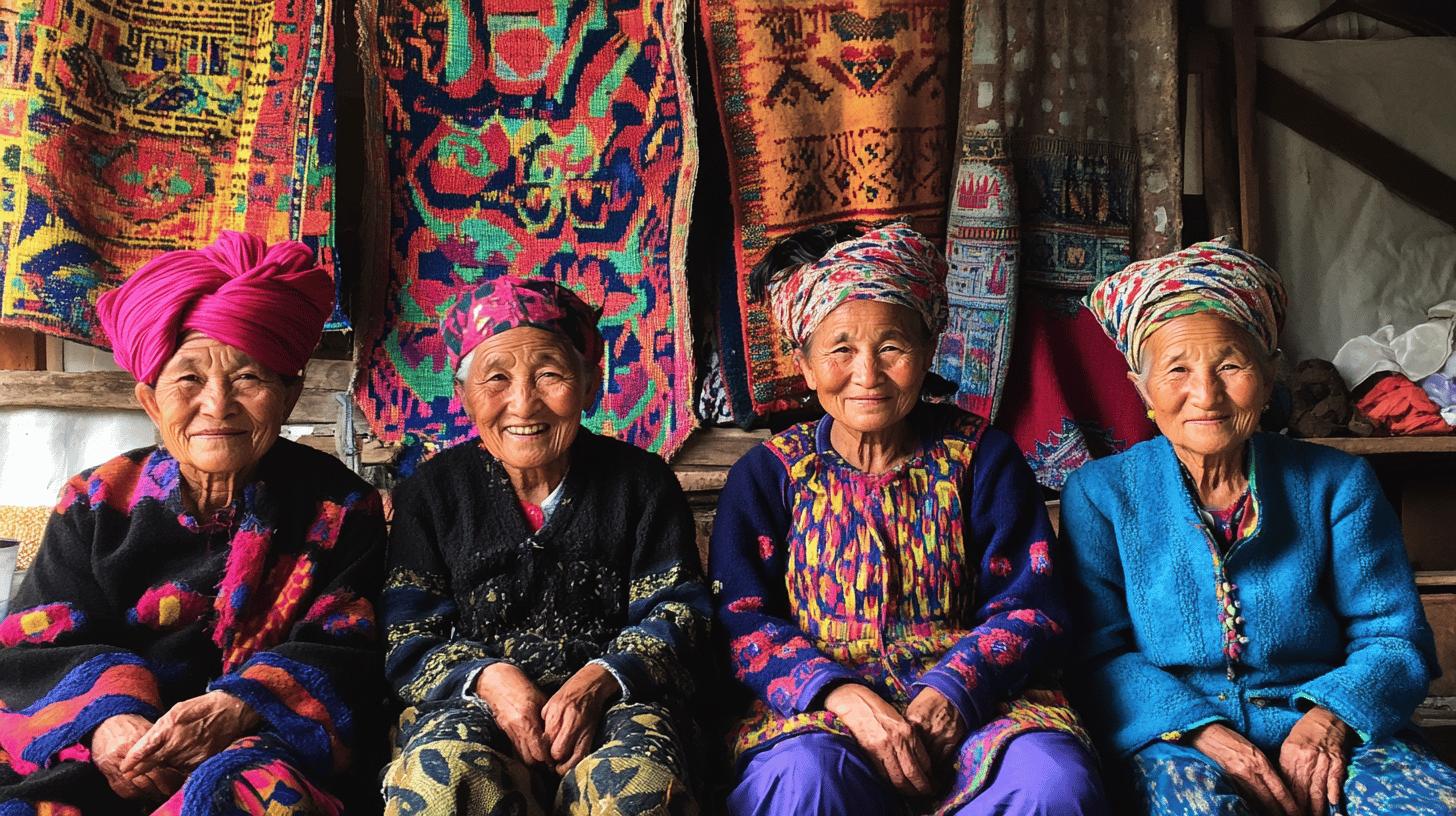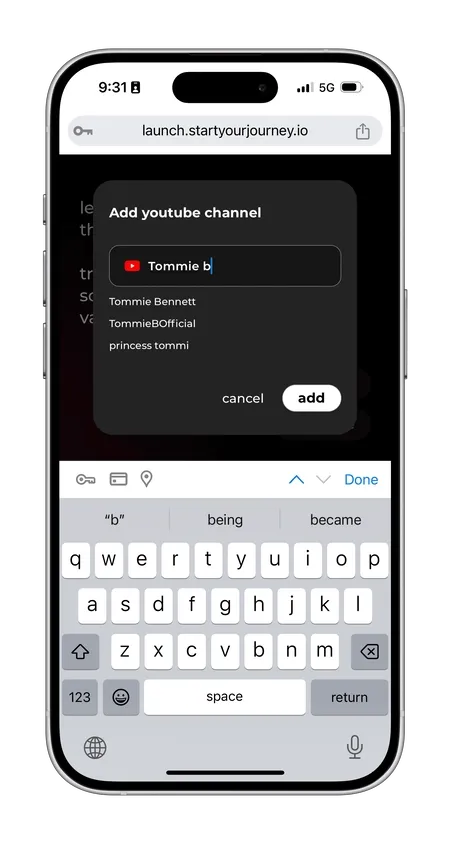The role of community in society cannot be overstated.
Communities serve as the backbone of social interaction, weaving individuals into a fabric of collective belonging and support. Beyond mere social gatherings, they are pivotal in nurturing a sense of identity and fostering psychological well-being. Membership in an engaged community reduces stress and encourages healthier lifestyles, evidenced by lowered blood pressure and diminished risks of obesity. Emotional support from peers and shared endeavors enhances coping mechanisms, leaving members better equipped for life's challenges. Empirical evidence supports that communities play an essential role in enriching lives, driving social cohesion, and ensuring a network that stands firm during trials. Through collective efforts, societies witness strengthened bonds and a renewed sense of purpose. The Journey app empowers such interactions, assisting individuals in forming genuine connections and sustaining them through real-life community engagement. Join this movement to witness firsthand the transforming power of community in elevating both societal well-being and individual contentment.
-4%20(1).png)
Communities serve as the backbone of society, providing individuals with a crucial sense of belonging that is essential for psychological well-being. This connection to like-minded individuals fosters a supportive environment where people feel valued and understood. Through shared experiences, communities nurture emotional support that helps reduce stress and cultivate resilience during difficult times. The role of community extends beyond emotional benefits, influencing physical health by encouraging healthier habits and lowering risks such as high blood pressure and obesity.
The importance of community lies also in its collective power. When individuals come together, they form a hub that enhances social cohesion and creates a safety net during times of need. This mutual support and collaboration enable communities to solve problems more effectively and create long-term positive impact. Engagement within these groups promotes continuous interaction and learning, further enriching the lives of members and strengthening the social fabric.
The Journey app embodies the essence of community by enabling individuals to build genuine connections with others who share their passions. Its robust tools support community creation, customization, and seamless communication, helping users participate in focused discussions and events that align with their interests. By facilitating real-life social interactions and fostering an environment of trust and growth, Journey encourages members to engage meaningfully, enhancing their overall well-being through a vibrant and supportive network.
Key benefits of community involvement include:

Communities serve as central hubs for shared values and inclusivity, laying the foundation for continuous learning and growth. Within educational settings, community involvement fosters an environment where individuals feel supported in their personal and professional development. By engaging with like-minded peers, members gain access to diverse ideas, resources, and experiences that enrich their understanding and broaden their horizons.
Educational communities are critical in nurturing growth by providing opportunities for mentoring, peer support, and resource sharing. These interactions encourage collaboration on projects and participation in extracurricular activities, which further enhance skills and build meaningful relationships. Platforms like Journey enable this process by seamlessly connecting individuals with shared interests, offering robust tools for organizing discussions, events, and learning opportunities in a safe and trustworthy environment. Through Journey, members can showcase their contributions and align with communities that support their passions and goals.
Key ways communities promote learning and development:

Active engagement in community life plays a crucial role in reducing feelings of isolation and stress. When individuals connect regularly with like-minded peers, they experience enriched social interaction that fosters emotional support and practical advice. This sense of belonging nurtures mental health by providing a stable network where people can share challenges and celebrate successes together.
Communities also have a profound impact on physical health. Research highlights that participation in community activities correlates with improved health outcomes, such as lower blood pressure and reduced obesity risk. These benefits stem from collective encouragement toward healthier habits, including regular exercise and balanced nutrition. Supportive environments motivate individuals to maintain positive lifestyle changes, reinforcing long-term well-being.
Journey supports health-focused communities by seamlessly connecting individuals who share wellness goals. Its robust tools enable focused discussions, event organization, and progress tracking, creating a vibrant environment where members can motivate each other. Journey’s AI Sidekick enhances engagement by recommending relevant content and facilitating group accountability, helping members sustain fulfilling and healthy lifestyles through authentic community interaction.

Collective action within communities is a crucial mechanism for fostering mutual support and achieving shared goals. When like-minded individuals come together, they pool diverse ideas, resources, and experiences, which amplifies their ability to solve problems effectively and implement long-term solutions. This collaboration strengthens group unity and cultivates social responsibility, making the community a vibrant hub for positive change.
Community events and group initiatives play an essential role in reinforcing these bonds. They create opportunities for members to participate actively, share updates, and witness the tangible impact of their joint efforts. The Journey app enhances this process by providing robust tools for organizing and managing community activities. Through customizable event calendars, group chats, and seamless communication features, Journey empowers community owners and members to coordinate collective efforts effortlessly in a safe and trustworthy environment.
Effective strategies for collective community action include:
Journey’s integrated platform encourages participation and collaboration by enabling users to discover relevant communities, engage in focused discussions, and contribute meaningfully to collective endeavors. This approach nurtures a fulfilling community experience that enriches individual growth while advancing common objectives.

Communities provide a rich environment where individuals find mutual emotional support that strengthens resilience and fosters personal growth. Being part of a community encourages open communication, enabling members to share diverse ideas and experiences. This dynamic exchange enhances understanding and nurtures creativity, allowing members to tackle challenges with innovative solutions. On an individual level, community involvement cultivates a sense of belonging and purpose, which motivates ongoing participation and self-improvement.
At the group level, collaborative efforts within communities create a vibrant hub of shared responsibility and trust. Members align their goals and pool resources, making collective endeavors more effective and sustainable. This cohesion promotes active participation and continuous learning, which in turn reinforces group identity and amplifies the community’s overall impact. Strong communication channels and well-defined roles help maintain focus and guide the community toward long-term success.
Communities that embrace collaboration and empowerment achieve remarkable outcomes by balancing individual contributions with collective goals. They become centers of influence and support that inspire innovation and drive meaningful change. Through sustained engagement, these communities foster environments where members can thrive personally and professionally, ultimately enriching the wider society.

Communities have historically served as the backbone of human survival and cultural identity. For centuries, strong bonds within tribes and societies provided essential support, enabling individuals to thrive in challenging environments. These early communities acted as central hubs where knowledge, traditions, and values were passed down, preserving the essence of cultural heritage and fostering a shared sense of belonging.
Throughout history, communities have been critical in maintaining cultural traditions and social cohesion. Indigenous groups relied on communal gatherings and rituals to reinforce identity and mutual support. Agricultural societies organized communal farming efforts to ensure food security and resource sharing. Local assemblies functioned as decision-making centers, enabling collective problem-solving and governance. These diverse practices highlight how communities have continuously fostered connection, collaboration, and resilience over time.
Historical examples of community involvement include:

Technology is rapidly reshaping how communities form, grow, and interact. Digital platforms are evolving into vibrant hubs that enable individuals to connect across distances while maintaining authentic, meaningful relationships. This shift is not only increasing the reach of communities but also enhancing their ability to cater to diverse interests and needs through innovative tools and features. The integration of AI and data-driven insights is guiding community leaders in creating safe, trustworthy environments that foster continuous engagement and growth.
Looking ahead, the future of community roles involves a blend of traditional values and cutting-edge innovation. Communities will increasingly emphasize sustainability, inclusivity, and personalized experiences that align with members’ passions and goals.
Engagement strategies will evolve to support both virtual and in-person interactions, allowing communities to expand organically while retaining a strong sense of belonging. This balance will be critical in nurturing long-term connections and collective impact. Technology’s influence on community building is profound. Enhanced communication platforms and seamless content management tools empower members to participate more actively and share resources effortlessly. These advances support well-maintained communities that continuously adapt to their members’ evolving needs. As communities embrace these trends, they will become central to personal development and societal improvement.
Key future trends in community development include:
In conclusion, the role of community remains a cornerstone for individual and societal well-being. Active participation in community life fosters a sense of belonging and emotional support essential for mental health. Communities also enhance physical health through shared activities and collective efforts. In educational settings, community involvement nurtures personal growth and professional connections. Historical perspectives reveal the enduring importance of community in preserving cultural traditions and identity. As society evolves, emerging trends promise innovative strategies for future community development. In all these facets, the role of community continues to empower individuals, encouraging collaboration and contributing to a more cohesive and resilient society.
A: Fundamental roles in a community include leadership, mentorship, advocacy, support, and collaboration. Together, these roles foster a thriving environment where members can contribute, learn, and achieve shared goals effectively.
A: Communities enhance society by providing emotional support, reducing stress, and promoting physical health. They encourage a sense of belonging and collaborative efforts, leading to improved social cohesion and problem-solving capabilities.
A: Community development is crucial as it equips members with resources, encourages social responsibility, and fosters economic growth. It improves collective well-being and strengthens resilience during social or economic challenges.
A: Community involvement enriches education by providing mentorship, peer support, and resource sharing. It creates opportunities for collaborative projects and extracurricular engagement, fostering a culture of continuous learning and personal growth.
A: Community health workers play a pivotal role in promoting health and well-being. They provide essential services, health education, and support to improve public health metrics, ultimately enhancing community resilience and wellness.
A: Historically, communities have preserved cultural traditions and ensured social identity. They have provided support through tribal gatherings, communal farming, and local assemblies, emphasizing the significance of collective survival and identity.